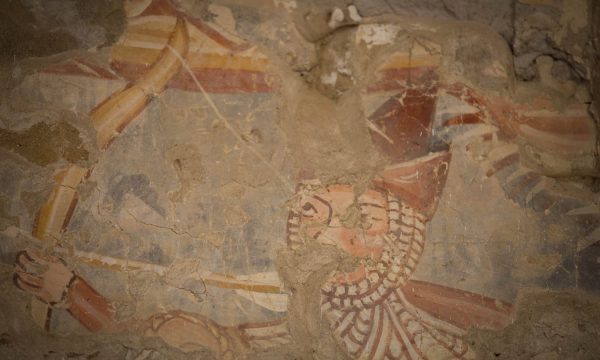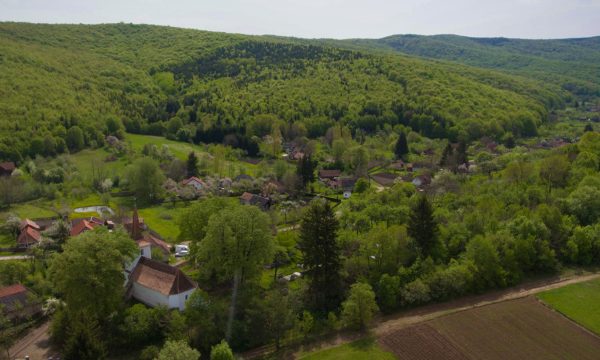Wall painting
The mural uncovered in august 2000 illustrates a scene belonging to a particular iconographic theme of medieval Hungarian painting, the Legend of Saint Ladislaus, the Pursuit. The mural fragment shows the crowned head of the sanctified king, with Gloria and the pagan Cuman archer and kidnapper escaping. Lines of the braided locks of hair covering the forehead and eyebrows of the kidnapped Hungarian girl are also visible, behind the figure of the Cuman.

The artist painted a large, leafy tree between the two hero figures. The mural is quite rich in detail, despite fragmentary state, for example the arrows drawn by the Cuman break apart when touching the Gloria of king Ladislaus, an allusion to the invincibility of the sanctified king; both foes are looking upward, where one can detect the traces of the lower trunks of a garment, probably belonging to an angel or the figure of Virgin Mary.
Natural Heritage
Not far from Saciova, on the left side the Negru river (Hu: Feketeügy) lies the Reci reservation, referred to as “the Sahara of Háromszék (Ro: Județul Trei-Scaune, historical region)” by the famous Hungarian polymath Balázs Orbán. The river itself has carried the sand masses that were formed into mounds and grooves by the wind a long time ago. Today, most of these formations are different from those described by Balázs Orbán.

The reservation got its Hungarian name after the silver birch (Betula pendula, Hu: nyír) which attracts the attention of passers-by with the outer layer of its white bark that peels off the tree in paper-like flakes. On the mounds in the shades of these trees we can see several rare plants like the protected bog bean (Menyanthes trifoliata) and purple marshlocks (Potentilla palustre). As the water level rises, small ponds are formed between the mounds with duckweeds (subfamily Lemnoideae) and frogbit (Hydrocharis morsus-ranae) covering their surface. In the depth of these waters waits for its victims the insect-eating waterwheel plant (Aldovandra vesiculosa) in the company of the European white water lily (Nymphaea alba). Another insectivore, the round-leaved sundew (Drosera rotundifolia) uses its bright red color to attract attention.
Songbirds welcome the tourists from spring to autumn. Sometimes garganeys (Anas querquedula) and, during their spring migration, northern lapwing (Vanellus vanellus) can also be seen here. The numerous pounds provide excellent habitats for amphibians like the moor frog (Rana arvalis); the males of these species turn into an azure shade in the breeding season.
Increasing human activity and building plans threaten the many, often rare and protected animals and plants that have found a home here. The non-native Robinia, first planted as ornamental trees, has also taken over parts of the area, displacing several native species and is another risk to the area.
